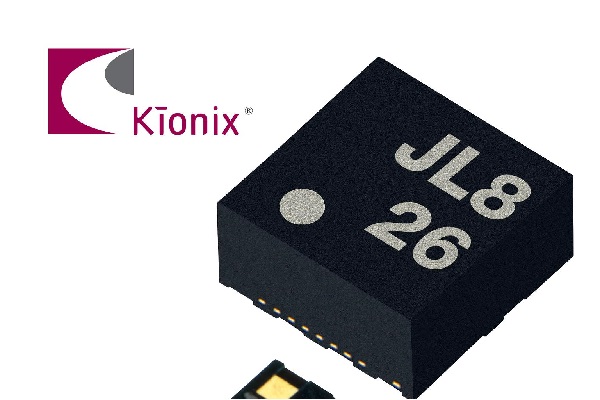ROHM Group company Kionix, Inc., a leader in the design and manufacture of MEMS solutions, has added embedded functionality to its line of high-performance accelerometers. The new KX126 tri-axis accelerometer integrates a step detector and step counter.
According to Nader Sadrzadeh, Kionix’s CEO, “As the applications for sensors grow, we look for use cases that become widespread enough to warrant embedding algorithms and functionality directly into our sensors. Pedometry has crossed that threshold. The usefulness of detecting when someone is walking and then counting their steps goes beyond fitness tracking – it can be adapted to assess the mobility of recuperating patients and the elderly, assist in identifying location changes, improve logistics and employee efficiency in workplaces, and more.”
The trend towards embedding functionality directly in a sensor has benefits that go beyond simply providing an easy to use, turnkey pedometer solution. It also extends battery life. Adds Sadrzadeh: “By optimizing the algorithm for low power and then embedding it into our sensor, we add less than 100nA compared to an accelerometer running without this function. This is a fraction of the power that would be consumed running a pedometer algorithm on an external MCU.”
The KX126 is a high resolution (16-bit) tri-axis digital accelerometer that comes in an ultra-compact 2mm x 2mm x 0.9mm LGA package. It supports normal/fast/high-speed I2C communications up to 3.4MHz and SPI communication up to 10MHz, range settings of +/- 2g, 4g, and 8g, accurate timing over temperature, and configurable low-noise and low-power modes.
In addition to pedometer functionality, a 2,048- byte FIFO buffer is built in that can capture seconds or minutes of motion data while the rest of the system sleeps. Other key features include high sampling rates (up to 25.6kHz) that allow detection and capture of fast, high frequency motions and a high-resolution wake-up/motion detection algorithm capable of detecting as little as 3.9mg of motion. Also, highly customizable embedded digital engines allow for automated detection of tilt, freefall, screen orientation changes, and tap/double-tap events.



















